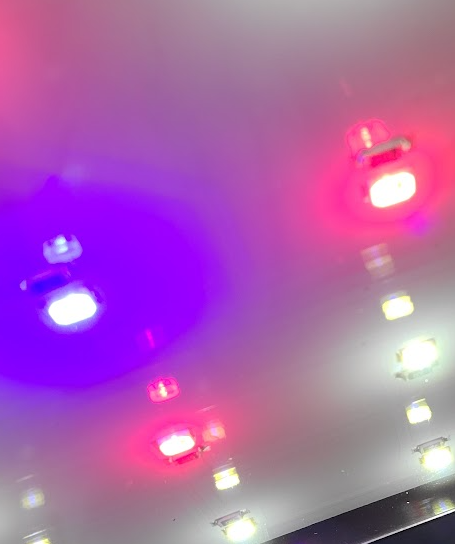I like to think about hydroponics as being a good indoor “gardening” technique that graduates to aquaponics outdoors. Technically, it’s not true. You can use both hydroponics and aquaponics indoors or outdoors. The only caveat is that anything indoors requires the use of a grow light to simulate the sun.
I asked for a little help from the internet to help me verbalize the difference between hydroponics, which uses artificial nutrients to feed the plants; and aquaponics, which uses fish waste to feed the plants, and here’s what it came up with:
Hydroponics and aquaponics are both modern agricultural methods that involve growing plants without soil, but they differ in the way they integrate with aquatic ecosystems and the sources of nutrients they use. Let’s delve into their differences and the materials required to set up each system:
Hydroponics:
Hydroponics is a method of growing plants in nutrient-rich water solutions instead of soil. The nutrients required for plant growth are directly supplied to the plants’ roots through the water, which can be recirculated or allowed to drain. Hydroponic systems rely on artificial nutrient solutions to provide plants with essential elements.
Aquaponics:
Aquaponics is a combination of aquaculture (fish farming) and hydroponics. In an aquaponic system, plants and fish are grown together in a symbiotic relationship. The waste produced by the fish serves as a nutrient source for the plants, and the plants’ roots help to filter and clean the water for the fish.
Not bad for a computer response, I’d say. I’ll add that of the two, hydroponics is the easier one. Aquaponics, because it requires the addition of live fish, adds a level of complexity the aquarium enthusiast knows: you can’t just plop down the system in a day. Rather, you need to prepare the tank ahead of time, allow the right bacteria to be cultured, add the fish without shocking them, then wait a little longer from there to insure that any plants you add to the grow bed will have enough food to sustain them. I haven’t tested the pH after the system stabilized after a month or so, but the right way to do it is to also test regularly.
Here are more details AI thought were important to convey. I’ve edited some of it to make it more correct and less redundant.
Materials needed for a hydroponic system:
 | Growing Medium: Although not soil, a growing medium is needed to support the plants’ roots. Common mediums include perlite, vermiculite, coconut coir, or rock wool. Growing Containers: Containers that hold the plants and growing medium, allowing their roots to come into contact with the nutrient solution. Water/Nutrient Solution: A reservoir to hold water and a nutrient solution, which needs to be properly mixed and pH-balanced for optimal plant growth. Pumps and Tubing: Pumps are used to circulate the nutrient solution, ensuring the plants’ roots receive a consistent supply. Tubing connects various components of the system. Lighting: Artificial lighting sources, such as LED or fluorescent lights, are used for indoor systems to provide the necessary light for plant growth. |
Materials needed for an aquaponic system:
 | Fish Tank: A tank to house the fish, which will produce waste that contains nutrients. Grow Beds: Containers where the plants are grown hydroponically. These are usually placed above the fish tank, and water containing fish waste is pumped up to them. Water Pump: A pump to circulate water from the fish tank to the grow beds. Media: Similar to hydroponics, a growing medium like expanded clay pellets, gravel, or similar materials is used to support plant roots in the grow beds. Siphon/Drainage System: To prevent overflows and maintain proper water levels in the grow beds. Fish: The fish are a crucial part of the system, providing nutrients for plant growth through their waste. Biological Filter: This helps break down the fish waste into nutrients that the plants can absorb. Beneficial bacteria play a role in this process. pH and Ammonia Test Kits: Monitoring tools to ensure the water quality is suitable for both fish and plant health. |
While both hydroponics and aquaponics involve soil-less plant cultivation, aquaponics takes it a step further by integrating fish farming, creating a self-sustaining ecosystem where fish and plants mutually benefit each other. On another note, aquaponics is completely organic: everything you need to feed the plants comes from what the fish produce. The water quality the fish need comes from plants using what the fish produce.
